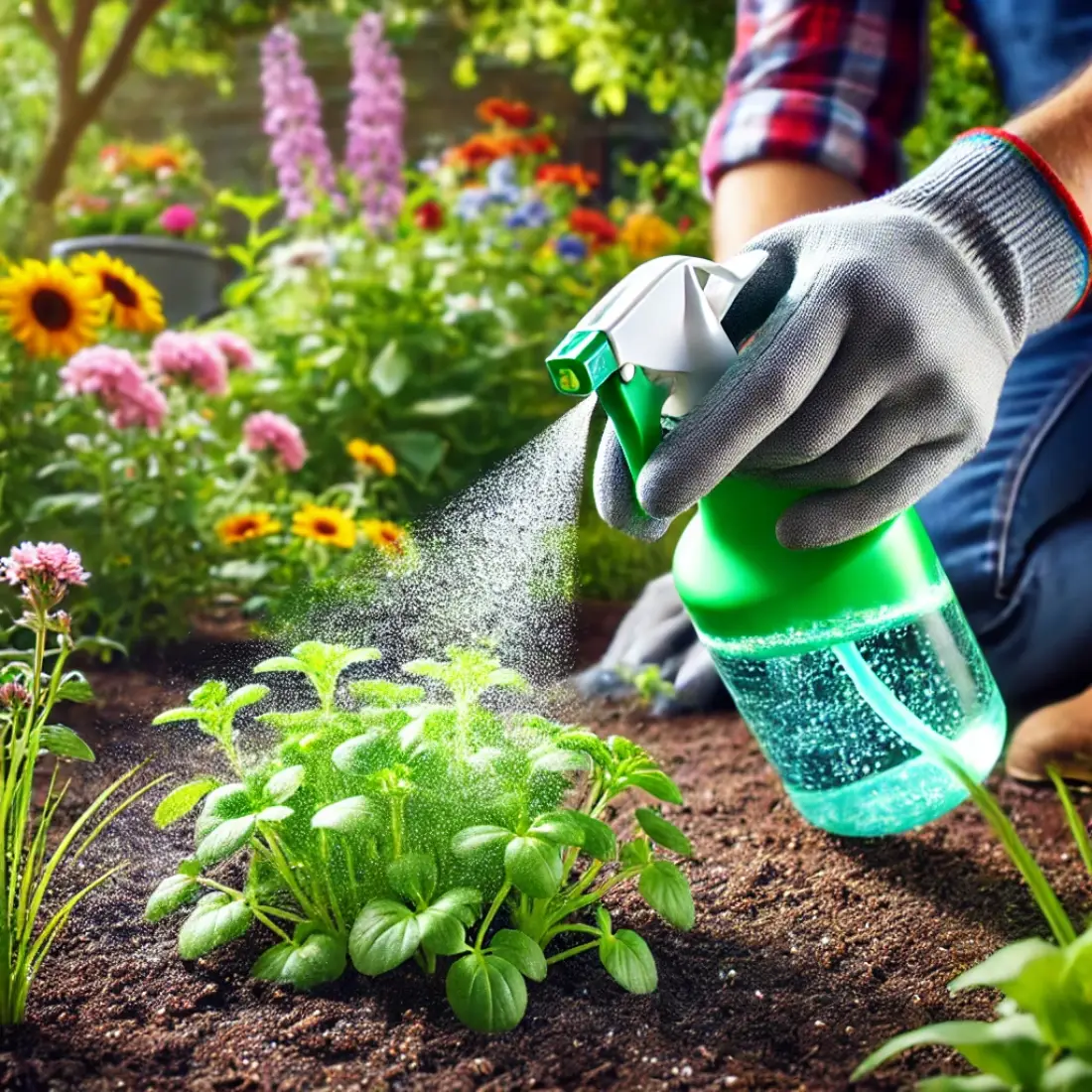Arum weeds, recognized for their invasive nature, can be a persistent problem in gardens and landscapes due to their rapid growth and resilience. Their rapid growth and resilience make them difficult to manage, often requiring more than just basic weeding techniques.
Understanding Arum Weeds
Arum weeds, such as Arum italicum and Arum maculatum, are perennial plants known for their distinctive arrow-shaped leaves and tuberous roots. They thrive in shaded, damp areas and can quickly overtake gardens, crowding out native plants and disrupting ecosystems.
These weeds spread through underground tubers, making them difficult to eradicate. Additionally, all parts of the plant contain toxic calcium oxalate crystals, posing health risks to humans and animals.
Toxic Components
- Leaves and Stems: Contain calcium oxalate crystals, causing severe irritation if ingested.
- Berries: Highly toxic, especially attractive to children, causing nausea, vomiting, and abdominal pain.
Symptoms of Poisoning
- Burning sensation in the mouth, throat, and stomach
- Swelling and difficulty swallowing or breathing
- Gastrointestinal distress
Precautions
- Keep arum plants out of reach of children and pets.
- Wear gloves when handling the plant.
- Educate family members about the plant’s toxicity.
Organic Herbicides
Organic herbicides offer a safe and eco-friendly alternative to chemical weed killers. They are derived from natural compounds, making them biodegradable and less harmful to soil health and wildlife.
Types of Organic Herbicides
- Vinegar-based Herbicides: Effective on young, small weeds by burning the leaves.
- Citrus Oil Herbicides: Strip the waxy cuticle from leaves, causing dehydration.
- Clove Oil Herbicides: Damages cell membranes.
Application Techniques
- Apply on sunny days for better efficacy.
- Cover leaves and stems thoroughly.
- Repeat applications may be necessary.
Pros and Cons
- Pros: Safe for pets and children, environmentally friendly, non-toxic to beneficial insects.
- Cons: May require multiple applications, less effective on mature weeds, can be costlier.
Mulching for Weed Suppression
Mulching is an effective organic method for suppressing arum weeds and improving soil health. By creating a barrier, mulch reduces light penetration and prevents weed seeds from germinating.
Types of Organic Mulches
- Straw: Ideal for vegetable gardens, decomposes quickly.
- Wood Chips: Long-lasting, suitable for flower beds and pathways.
- Leaf Mulch: Decomposes quickly, improves soil structure.
- Grass Clippings: Decompose rapidly, adding nitrogen to the soil.
Application Methods
- Clear the area of existing weeds and water the soil.
- Apply a 2-4 inch layer of mulch around plants.
- Replenish mulch as needed.
Advantages of Mulching
- Weed Suppression: Blocks light, preventing weed seeds from germinating.
- Moisture Retention: Helps soil retain moisture.
- Soil Temperature Regulation: Keeps soil cooler in summer and warmer in winter.
- Soil Improvement: Adds organic matter as it decomposes.
Using Cover Crops
Cover crops can control arum weeds by outcompeting them for resources. They provide benefits such as weed suppression, soil improvement, and erosion control.
Recommended Cover Crops
- Clover: Fixes nitrogen, providing dense ground cover.
- Rye: Offers excellent weed suppression and soil erosion control.
- Mustard: Known for its allelopathic properties, it can suppress weed seeds.
Planting and Managing Cover Crops
- Choose cover crops suited to your climate and soil type.
- Plant in the off-season or between main crops.
- Broadcast seeds and lightly rake them into the soil.
- Water as needed and mow if necessary to prevent setting seed.
- Terminate before planting your main crop.
Solarization Method
Solarization uses the sun’s energy to heat the soil, killing weeds, seeds, and pathogens. This involves covering the soil with a transparent plastic sheet.
Step-by-Step Guide
- Clear the area of existing weeds and debris.
- Level the soil.
- Thoroughly water the soil.
- Cover with clear plastic sheeting and secure the edges.
- Leave in place for 4-6 weeks during the hottest part of the year.
Effectiveness and Considerations
- Advantages: Kills arum weeds and their seeds, controls soil-borne pests, and is environmentally friendly.
- Considerations: Best performed during the hottest months, suitable for smaller areas, requires consistent sunny weather.
Hand Removal of Arum Weeds
Hand removal can be an effective method for managing arum weeds, especially in smaller areas or when combined with other control techniques.
Steps for Hand Removal
- Wear Protective Gear: Use gloves to protect your hands from irritation caused by calcium oxalate crystals.
- Loosen the Soil: Use a garden fork or trowel to loosen the soil around the weed.
- Remove the Entire Plant: Carefully dig out the plant, ensuring you remove the entire root system, including tubers, to prevent regrowth.
- Dispose of the Plant Properly: Place the removed weeds in a bag and dispose of them in the trash. Avoid composting, as the tubers can survive and spread.
FAQs on Organic Control of Arum Weeds
What are the best methods for organic control of arum weeds?
The best methods include manual removal, mulching, using cover crops, solarization, and applying organic herbicides. Combining these techniques can effectively manage and reduce arum weed infestations.
Can organic methods completely eliminate arum weeds?
While organic methods can significantly reduce and control arum weeds, complete elimination may be challenging. Regular maintenance and a combination of organic strategies are necessary for effective long-term control.
How long does it take to see results with organic control methods?
Results can vary depending on the method used. Manual removal and organic herbicides can show immediate results, while mulching, cover crops, and solarization may take several weeks to months to effectively suppress arum weeds.
Are organic herbicides safe for pets and children?
Yes, organic herbicides are generally safer for pets and children than chemical alternatives. However, it is still important to follow the manufacturer’s instructions and keep pets and children away from treated areas until the herbicide has dried or settled.
What are the advantages of using mulching for weed suppression?
Mulching provides multiple benefits, including weed suppression by blocking light, retaining soil moisture, regulating soil temperature, and adding organic matter to the soil as it decomposes.
How do cover crops help in controlling arum weeds?
Cover crops compete with arum weeds for resources, shade out weed seedlings, and can release natural chemicals that inhibit weed growth. They also improve soil health, making the environment less favorable for arum weeds.
What is solarization, and how does it control arum weeds?
Solarization involves covering soil with clear plastic to trap solar heat, raising the soil temperature to levels that kill arum weeds, seeds, and soil-borne pests. It is an effective organic method for weed control.
Can I use vinegar to kill arum weeds?
Yes, vinegar-based herbicides can be effective on young arum weeds. The acetic acid in vinegar burns the leaves, but multiple applications may be needed for established weeds.
Are arum weeds toxic to humans and pets?
Yes, arum weeds are toxic. All parts of the plant, especially the berries, contain calcium oxalate crystals, which can cause irritation and discomfort if ingested or touched.
How often should I check my garden for arum weeds?
Regular monitoring is crucial for effective control. Check your garden at least once a week to catch and remove arum weeds early before they become established.











